Our Verdict
The RX 7700 XT may yet end up as the mid range champion, but while its priced just $50 less than the much faster RX 7800 XT, it's hard to see the gaming community warming to it.
For
- A solid 1440p option
- 12GB of VRAM and 192-bit bus
- The Sapphire Pulse is quiet
- Starfield bundled for a limited time
Against
- The superior RX 7800 XT is just $50 more
- Power efficiency isn't stellar
- Nvidia is a step ahead with RT and DLSS
PC Gamer's got your back
With the release of the RX 7800 XT and RX 7700 XT, AMD's RX 7000-series is apparently complete. These cards fill the gaping hole AMD had in its line-up following the release of the high-end RX 7900 XT and RX 7900 XTX in late 2022 and the mainstream RX 7600 in May.
If you haven't seen it, do check out Dave's RX 7800 XT review. Both cards are based on the Navi 32 GPU, so much of his analysis is relevant to the RX 7700 XT that I have on hand. Specifically, I have the Sapphire Pulse RX 7700 XT. All 7700 XT's are AIB cards as there is no AMD reference card.
The RX 7700 XT looks good compared to it's RX 6700 XT predecessor. It's got more shaders, better ray tracing performance, faster memory and it includes AI accelerators the RX 6000-series cards specifically lacked. AMD is positioning it as an RTX 4060 Ti 8GB competitor, and at $449 / £430 / AU$769 it's smack in between the price of the 8GB and 16GB flavors of said card.
The RX 7700 XT's problem isn't so much the Nvidia competition, it's the RX 7800 XT that costs only $50 more. The Sapphire RX 7700 XT I have on hand is the base model of the three cards Sapphire offers. It's joined by the mid-range Pure and high-end Nitro+. The Pulse is priced at $449, and honestly, spending more on premium models is foolish. Why on earth would anyone buy a premium RX 7700 XT over an RX 7800 XT? Therein lies the weakness of the RX 7700 XT. It's stuck in a kind of no-man's land that makes it difficult to recommend over its more capable sibling.
The RX 7700 XT is built around the Navi 32 chiplet GPU, the same as that of the RX 7800 XT, just with some functionality disabled. Both come with a single 5nm Graphics Compute Die (GCD) and four surrounding 6nm Memory Cache Dies (MCDs) The RX 7700 XT for its part has one of the MCDs disabled.
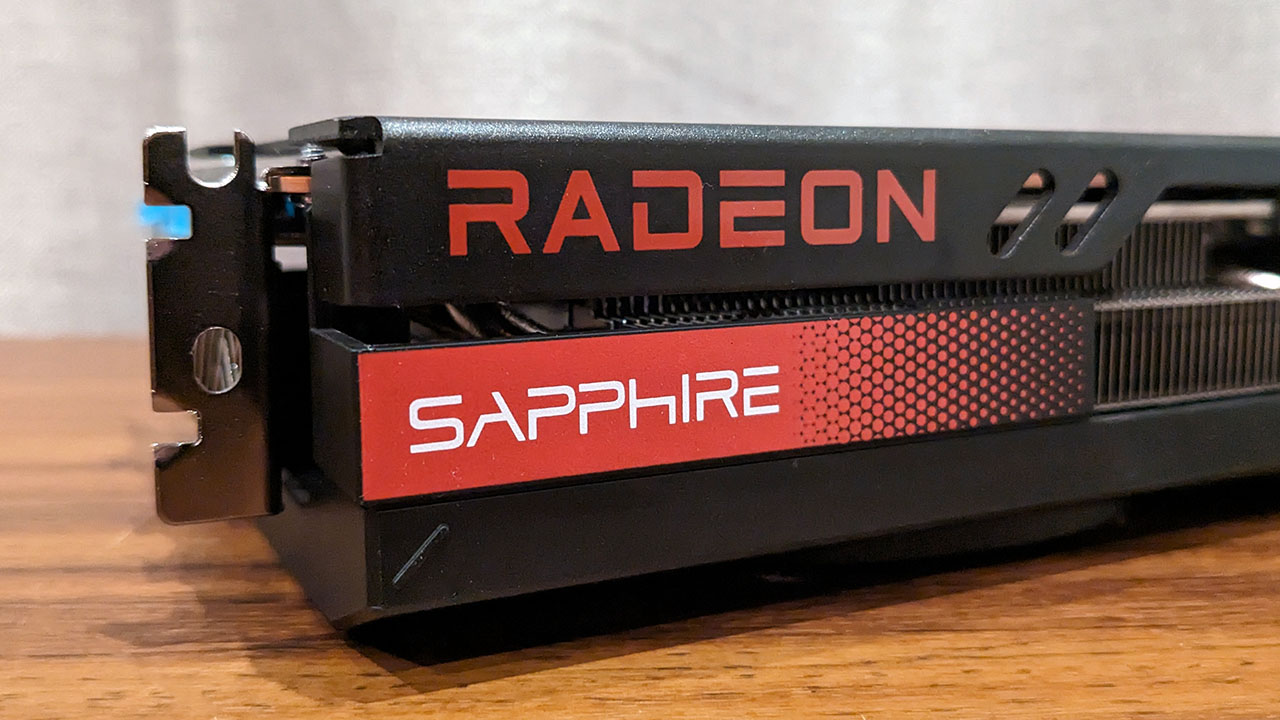
The RX 7700 XT packs in 54 Compute Units, 54 Ray Accelerators, and 96 ROPs. That compares to the 60, 60, and 120 core config of the RX 7800 XT. The RX 7700 XT's rated boost clock is just over 100 MHz higher than the RX 7800 XT which is a little surprising, but it does lose out in the memory stakes. The RX 7700 XT comes with 12GB of 18Gbps GDDR6 memory over a 192-bit bus. The fully enabled RX 7800 XT is equipped with 16GB of 19.5 Gbps memory, a 256-bit bus and more Infinity Cache, which combined together give it a major memory bandwidth advantage over the RX 7700 XT.
The base RX 7700 XT is rated with a 245W total board power. The Sapphire Pulse is surprisingly below this, at 230W. That puts it right alongside the RX 6700 XT, though it's still a big step up over the RTX 4060 Ti 8GB, which comes in at a very frugal 160W. RTX 40-series cards might be overpriced themselves, but their power efficiency is absolutely stellar.
| Header Cell - Column 0 | AMD Radeon RX 7700 XT | AMD Radeon RX 6700 XT |
|---|---|---|
| Architecture | RDNA 3 | RDNA 2 |
| Manufacturing process | 5nm GCD + 6nm MCD | 7nm |
| Transistors | 28.1 billion | 17.2 billion |
| Compute units | 54 | 40 |
| Shaders | 3456 | 2560 |
| ROPs | 96 | 64 |
| Infinity cache | 48MB | 96MB |
| Memory | 12GB GDDR6 | 12GB GDDR6 |
| Memory speed | 18 Gbps | 16Gbps |
| Memory bus | 192-bit | 192-bit |
| TBP | 245W | 230W |
| Launch price | $449 | $479 |
The RX 7700 XT's 12GB of VRAM and 192-bit bus is something that’s more appropriate for a 2023 mid-range graphics card.
The RX 7700 XT has a couple of features and specifications the competing RTX 4060 Ti 8GB lacks. DisplayPort 2.1 is pretty much a check box feature right now, as ultra-high-resolution gaming with high refresh rates requires a top end graphics card. However, the RX 7700 XT's superior memory subsystem is something that certainly deserves praise.
One of our criticisms of the RTX 4060 Ti is its weak 8GB and 128-bit memory configuration. The RX 7700 XT's 12GB of VRAM and 192-bit bus is something that’s more appropriate for a 2023 mid-range graphics card. It will hold the card in good stead for longer into the future.
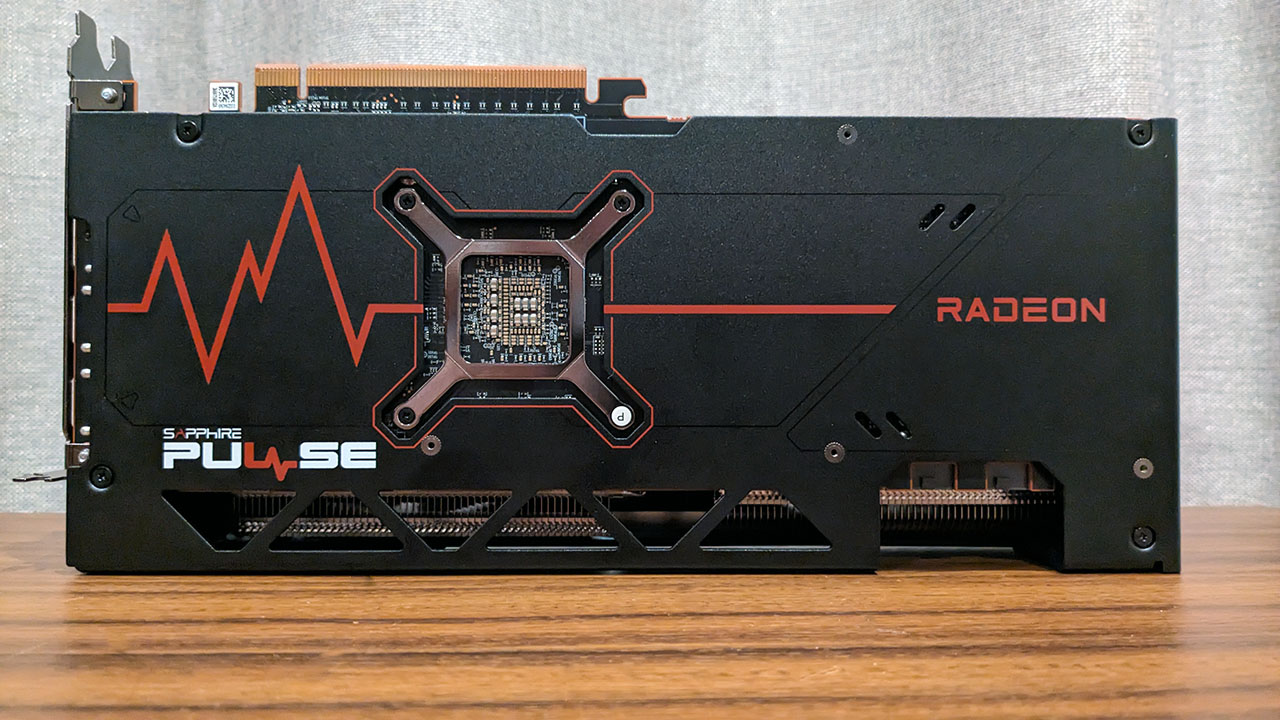
CPU: Intel Core i9 12900K
Motherboard: Asus ROG Z690 Maximus Hero
Cooler: Corsair H100i RGB
RAM: 32GB G.Skill Trident Z5 RGB DDR5-5600
Storage: 1TB WD Black SN850, 4TB Sabrent Rocket 4Q
PSU: Seasonic Prime TX 1600W
OS: Windows 11 22H2
Chassis: DimasTech Mini V2
Monitor: Dough Spectrum ES07D03
Ray tracing in 2023 still results in significant performance hits, so it's less relevant in the entry level and mid range GPU markets. A smooth 60 FPS+ 1440p experience is preferable to a beautiful-looking, but choppy gaming experience. Nvidia has DLSS 3 and Frame Generation though, which cannot be overlooked. I don't consider DLSS to be a silver bullet, but there's no denying its usefulness. Its adoption and awareness is increasing and its only going to become more relevant.
AMD is preparing to launch its competing FSR 3 technology, and I really look forward to seeing it in action. Forspoken and Cyberpunk 2077 two notable examples with upcoming support. But Nvidia has a big head start thanks to years of developer support and funding. Will FSR 3 be AMD's hold-my-beer answer?
Synthetic and system performance

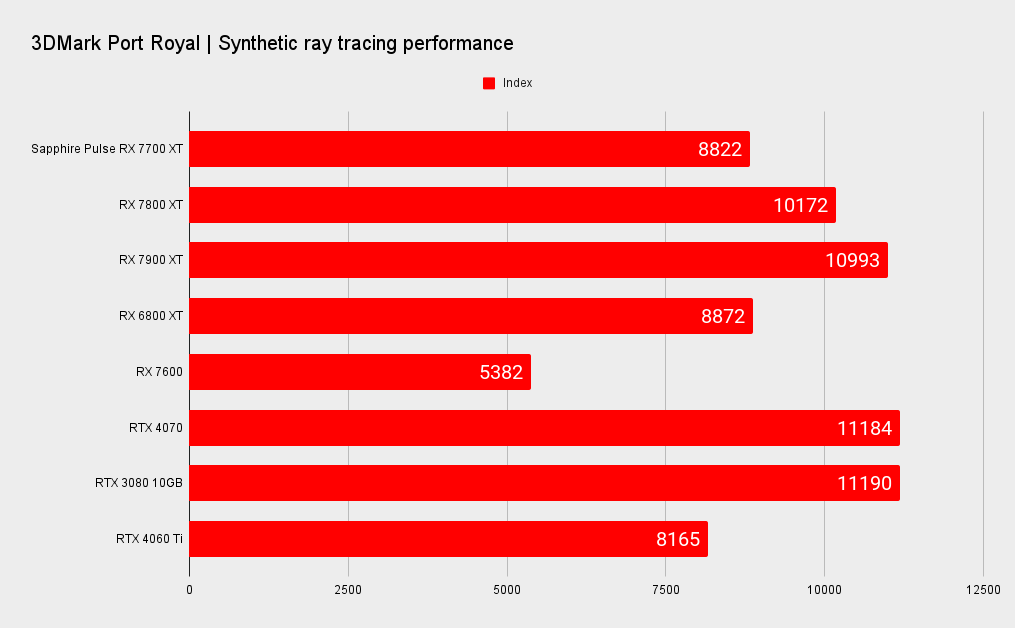
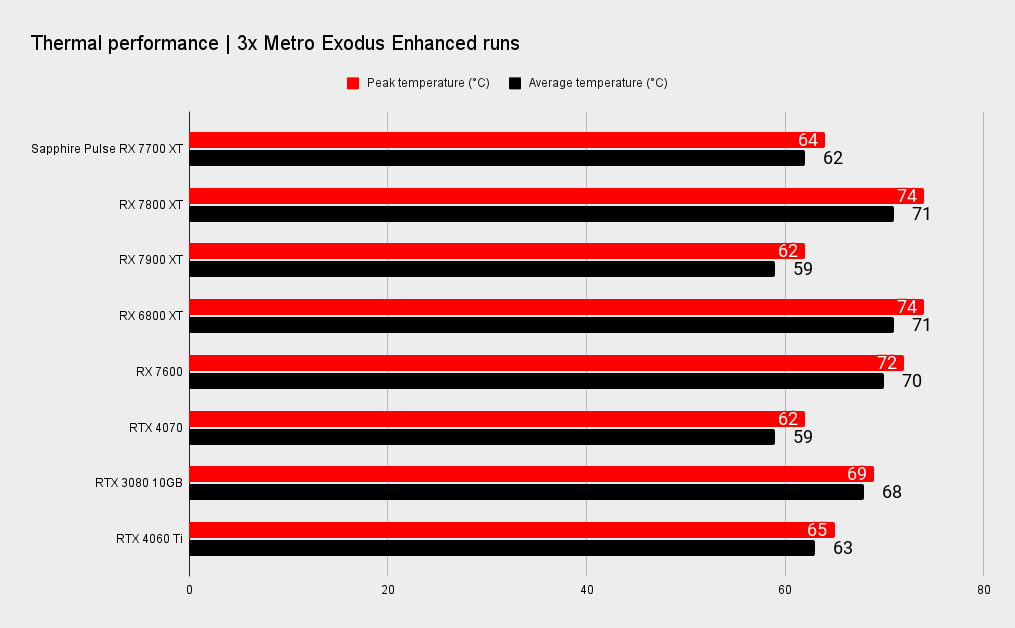
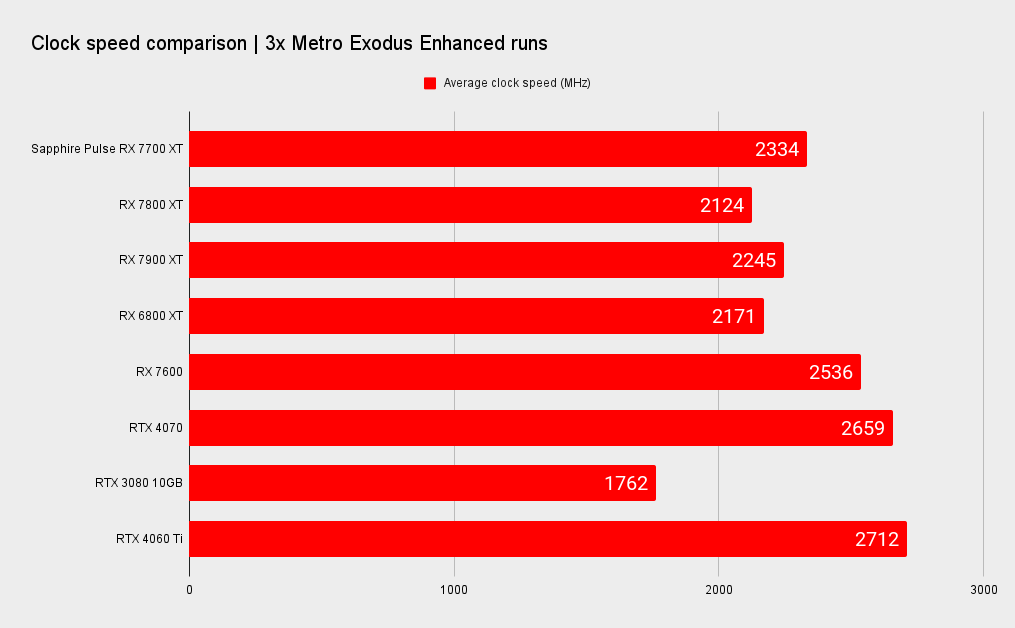
1080p gaming performance
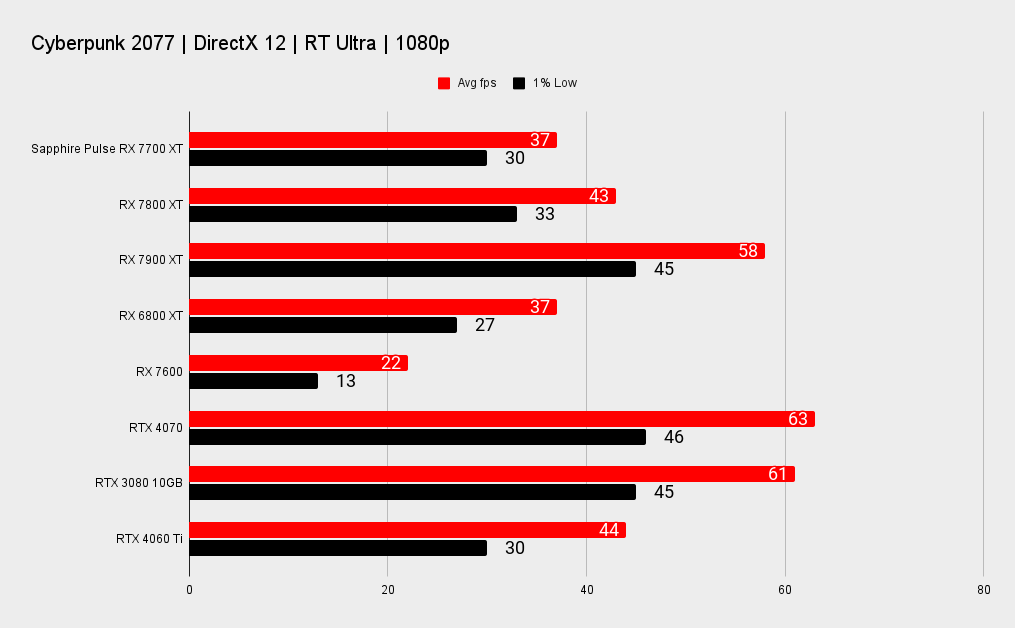
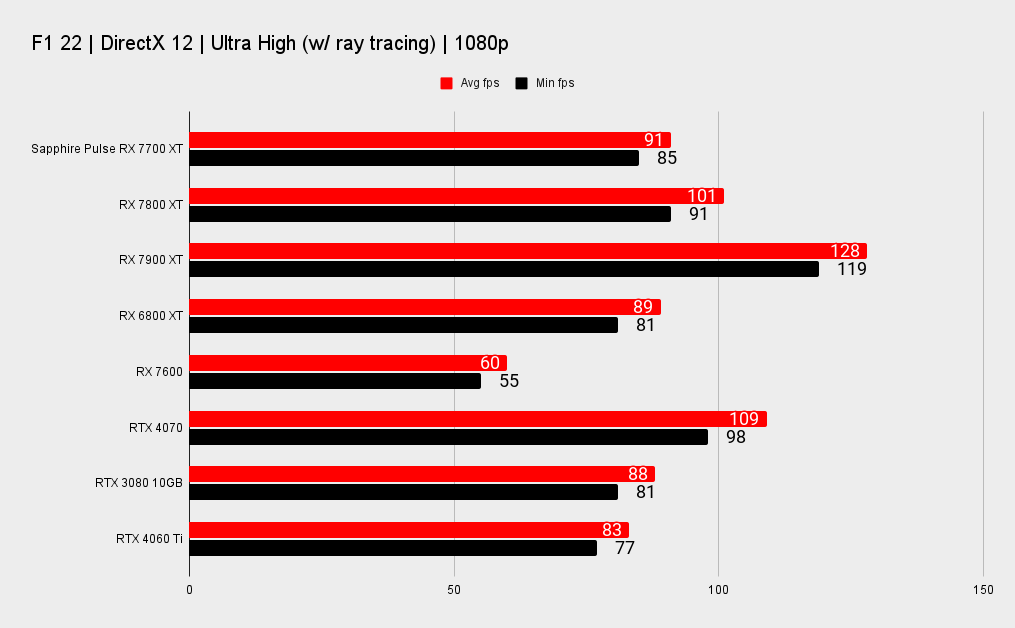
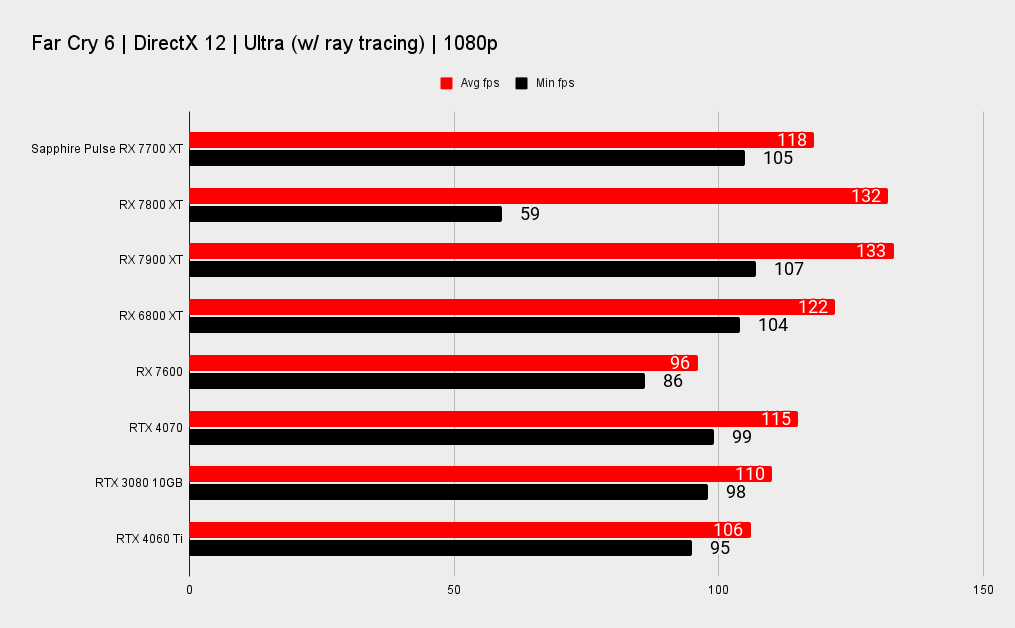

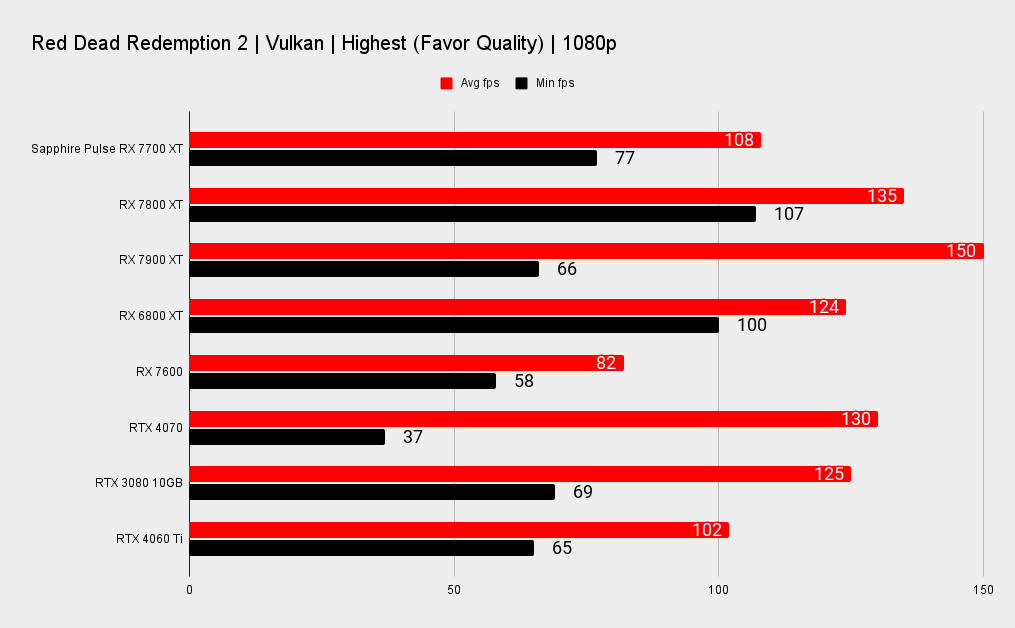


1440p gaming performance


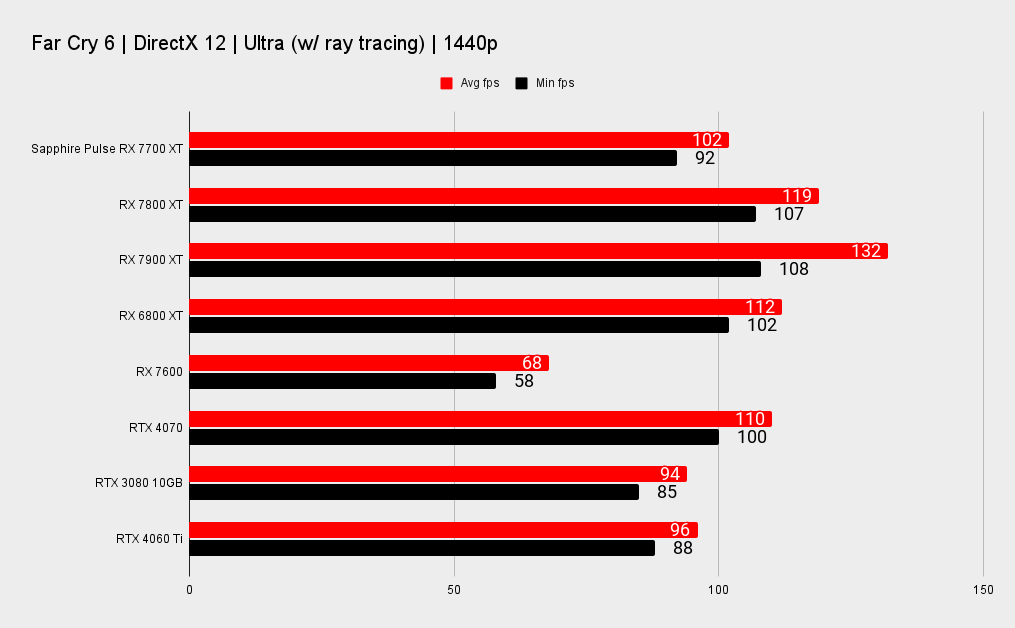
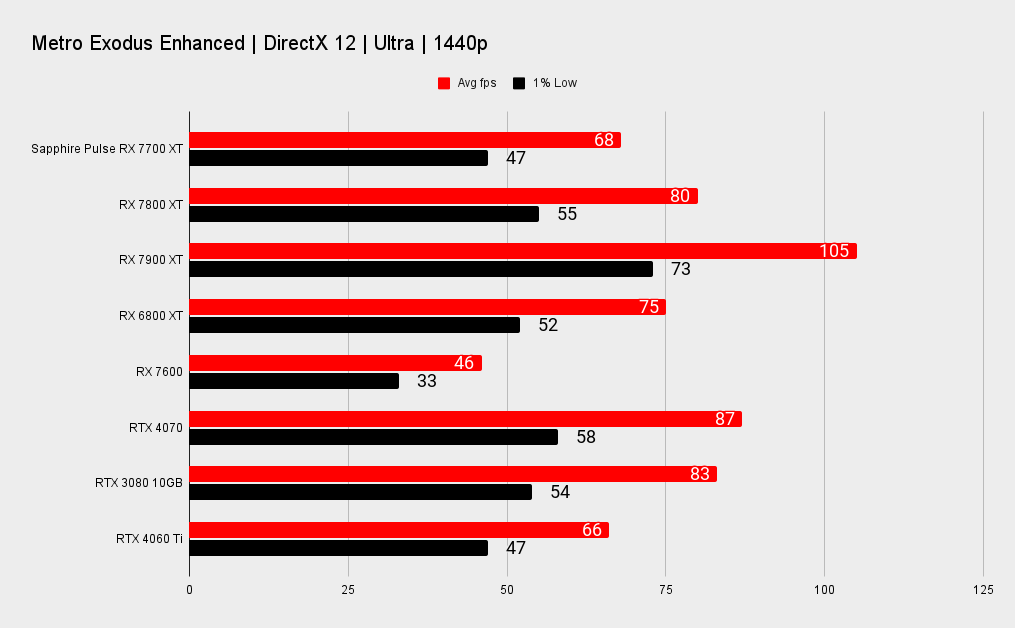



4K gaming performance
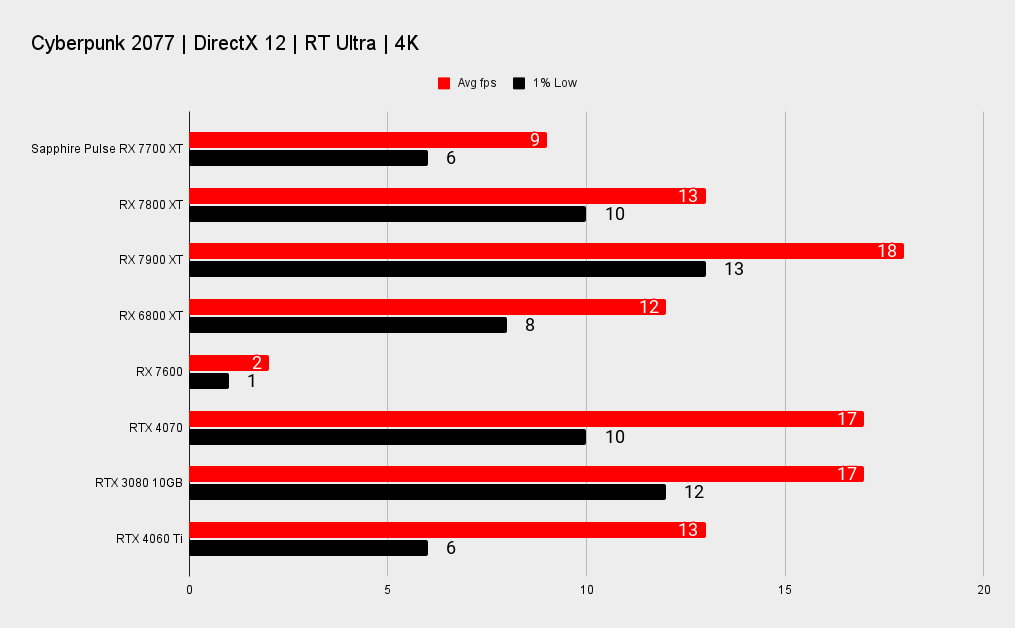
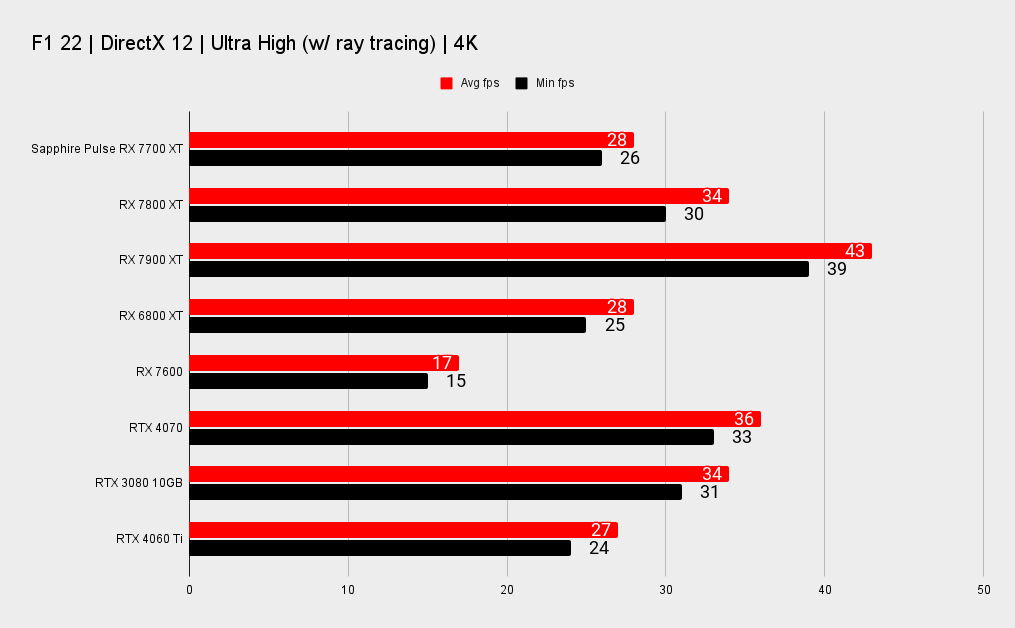
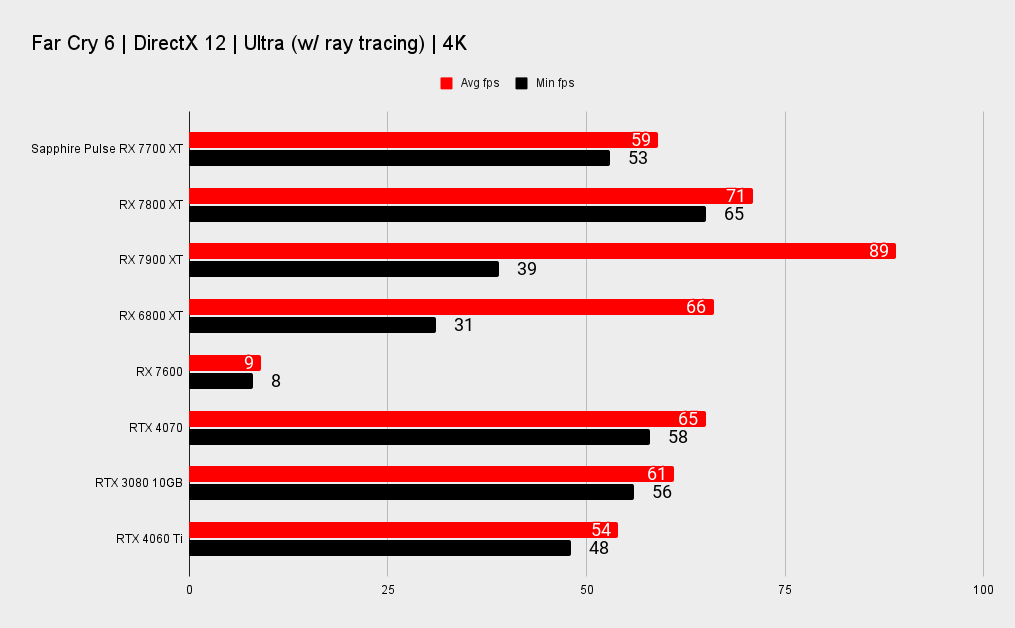
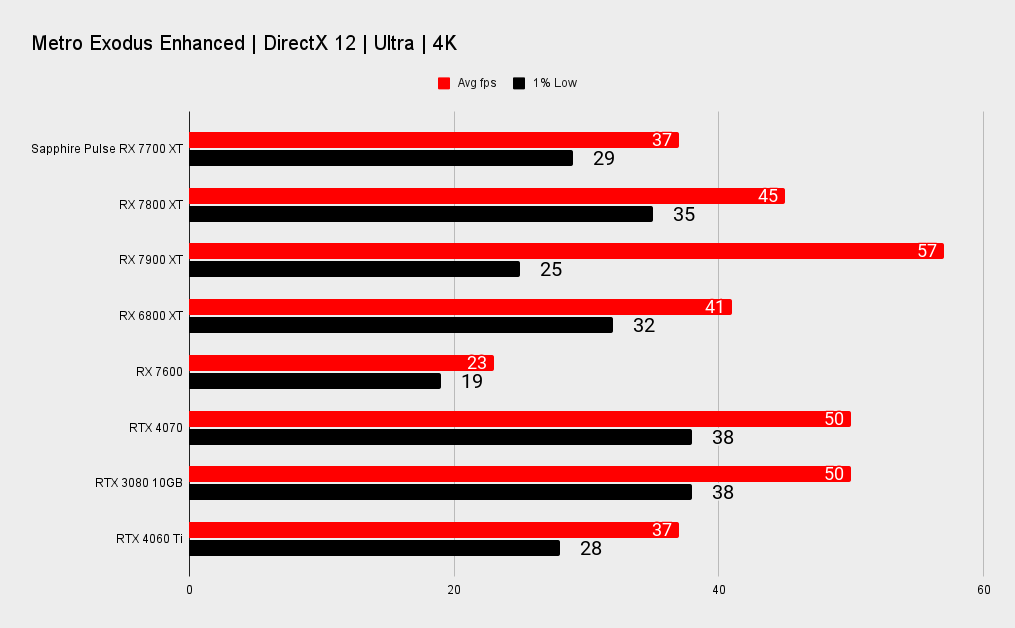

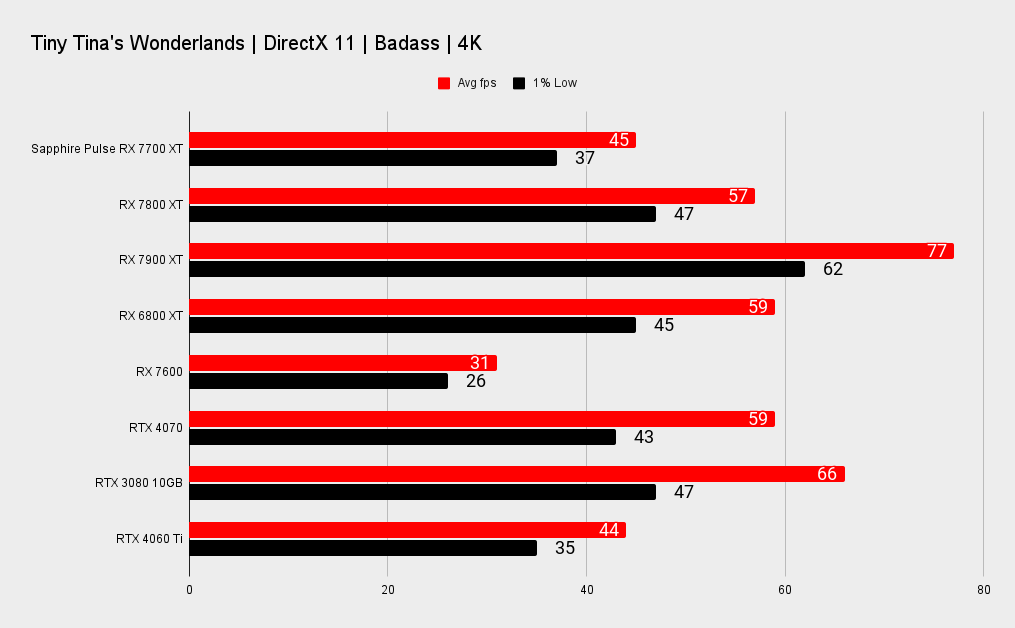
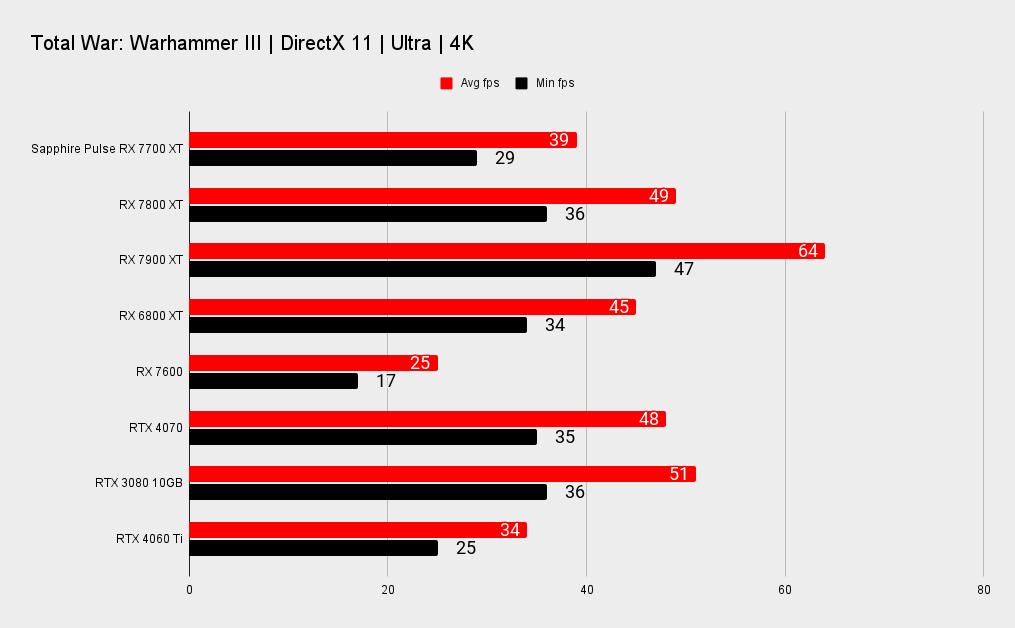
The performance of the RX 7700 XT compares well to the RTX 4060 Ti 8GB. The RX 7700 XT's strength is its raster performance, which is a recurring theme from just about any recent AMD graphics card review. It's ahead of the RTX 4060 Ti in traditionally rendered games, but once you throw some heavy ray tracing into the mix, the RTX 4060 Ti comes right back.

✅You really are worried about 8GB VRAM limitations. For now, 8GB of VRAM is adequate, but some games already hit those limits, and 8GB will only ever become more limiting, but with 12GB in the 7700 XT you are literally buying yourself more time.
✅ You can't find a little more budget for an RX 7800 XT. The RX 7800 XT is only $50 more than the RX 7700 XT. If you can't find those extra dollars or you're not impressed by the RTX 4060 Ti, then the RX 7700 XT is not a bad choice.
❌Ray Tracing and DLSS 3 is a must have. AMD has improved its ray tracing performance, but until we see FSR 3 in action, Nvidia's tech cherries and ever increasing developer support cannot be overlooked.
❌ You can wait before you upgrade. The RX 7700 XT is a good graphics card, but it's overpriced. In time, it's price is sure to drop, mirroring what happened with the RX 6700 XT which eventually became a fantastic bang for buck card.
The RX 7700 XT is a capable 1440p card, and that's all I would expect of it really. It manages 60 FPS in almost all of our test titles. The exception is Cyberpunk 2077, but that runs like plucked turkey on anything less than an RTX 4090. 4K remains the domain of more expensive cards but if you're playing older titles, competitive shooters or MOBA games that are well optimized, the RX 7700 XT will run those at 4K without a hitch.
The Sapphire Pulse cooler is easily capable of handling the 230W TBP of the card. It remained remarkably quiet throughout my testing, though the backplate got hot after a time. Good case airflow remains a must.
Sadly, due to a time consuming motherboard failure I have not been able to run our usual power consumption test, where we accurately measure performance per watt. However, a total system power consumption reading resulted in a peak wall draw of 306W. That turned out to be a little under the RX 6700 XT, though the amazingly efficient RTX 4060 Ti used a whopping 65W less.
We'll update this review with power consumption data in the next week or so. Stay tuned.
The RX 7700 XT competes well with the similarly overpriced RTX 4060 Ti 8GB, but at $399 it's still $50 cheaper. Even if they were both $399, many would gravitate towards the RTX 4060 Ti due to its support for DLSS 3, Frame Generation and its superior ray tracing performance, though the latter isn't as important as it is on a high end card.
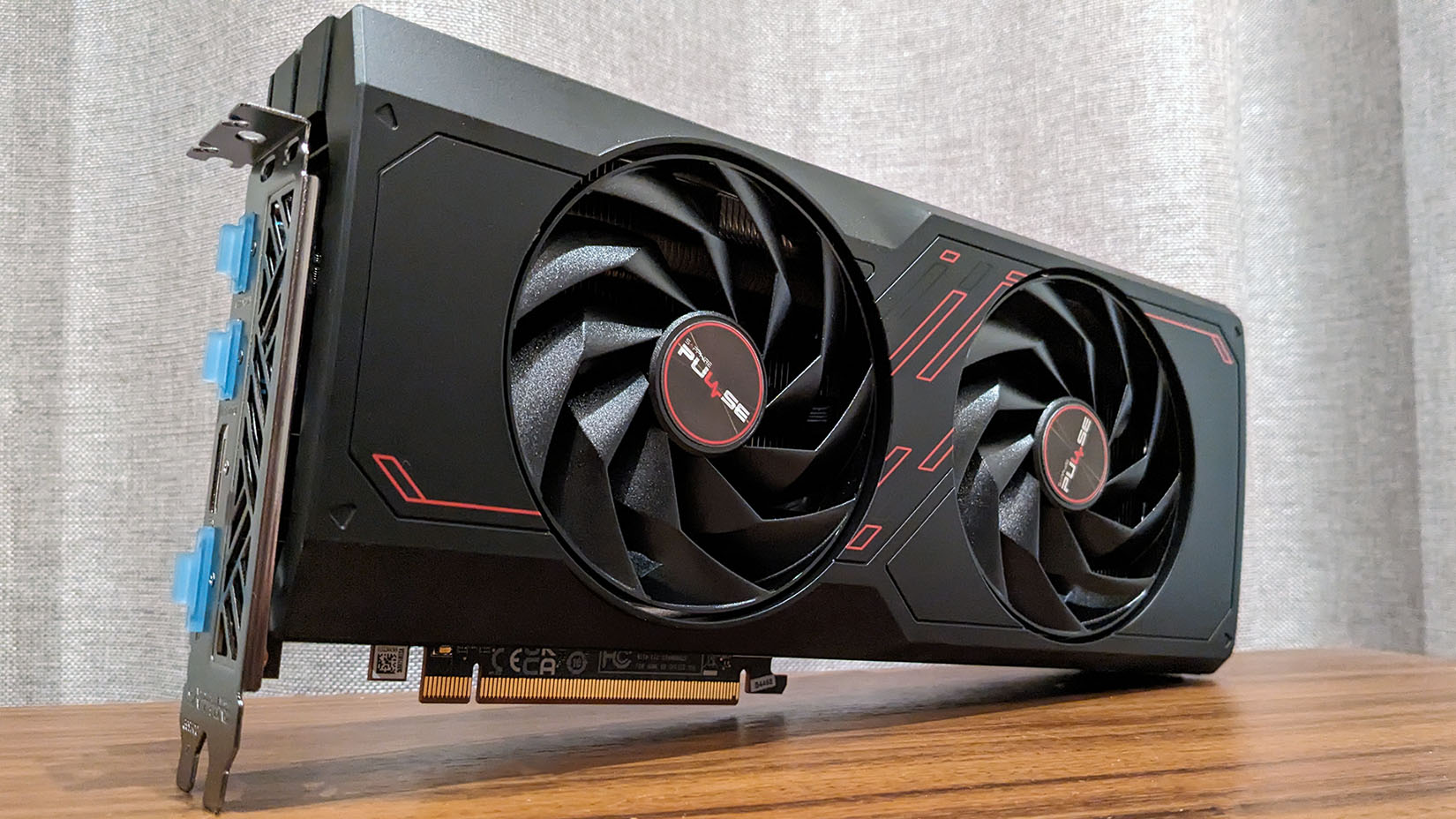
Do note, at the time of writing, AMD is bundling Starfield with RX 7700 XT's. That alone might convince you to jump on the RX 7700 XT over the RTX 4060 Ti 8GB.
Pricing is arbitrary and I'm positive the price of the RX 7700 XT will fall in much the same way the RX 6700 XT's did. The RTX 4060 and RX 7600 need to look over their shoulders, such is the value offered by the RX 6700 XT.
Right now it's a tough card to recommend, but that's almost certain to change.
The RX 7700 XT is going to be hobbled by AIB pricing. $449 is the price of entry level models. Once you consider the premium tier models like an Asus TUF or Sapphire Nitro+, the 7700 XT becomes a non starter. Why would you consider a 7700 XT that costs as much as a faster RX 7800 XT? It beats me. Right now it's a tough card to recommend, but that's almost certain to change.
The RX 7700 XT, and the Sapphire Pulse I used for this review delivers strong 1440p performance in a quiet package at a power level that's not that bad. If only it was $399 or lower in the here and now. As it is, the RX 7800 XT is the better buy, while the RTX 4060 Ti 8GB for $50 less remains a very strong option.
Wait a month or two or six and we'll reevaluate the RX 7700 XT. If might be overshadowed right now, but in time, the potential is there for it to be this generation's mid range gem. Maybe? Maybe not. Time will tell.
But right now, I like the RX 7700 XT, but I don't like its price. At $449, it's just not a compelling option compared to the superior $499 RX 7800 XT, and that's probably the best card in this price range at this point in time.
The RX 7700 XT may yet end up as the mid range champion, but while its priced just $50 less than the much faster RX 7800 XT, it's hard to see the gaming community warming to it.

Chris' gaming experiences go back to the mid-nineties when he conned his parents into buying an 'educational PC' that was conveniently overpowered to play Doom and Tie Fighter. He developed a love of extreme overclocking that destroyed his savings despite the cheaper hardware on offer via his job at a PC store. To afford more LN2 he began moonlighting as a reviewer for VR-Zone before jumping the fence to work for MSI Australia. Since then, he's gone back to journalism, enthusiastically reviewing the latest and greatest components for PC & Tech Authority, PC Powerplay and currently Australian Personal Computer magazine and PC Gamer. Chris still puts far too many hours into Borderlands 3, always striving to become a more efficient killer.

